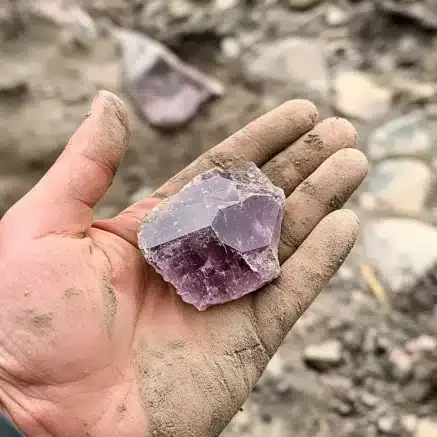Tracking Wealth Through the AI Lens
Tracking Wealth Through the AI Lens
Another week, another geopolitical headline sends a niche sector of the market into a frenzy. This time, the catalyst was a statement from Donald Trump, asserting that China is holding the world "captive" with its control over rare earth minerals. The market's reaction was as predictable as it was immediate: a handful of rare earth stocks, mostly Western-based junior miners and exploration firms, saw their valuations inflate overnight.
This is a familiar pattern. A politician highlights a genuine strategic vulnerability—leading to headlines like Rare earth stocks jump after Trump says China holding world captive with its strict controls—capital floods into speculative assets positioned as the "solution," and the cycle repeats. As an analyst, my first instinct is to disregard the political rhetoric and look at the underlying data. The narrative is compelling—a David vs. Goliath story of Western independence from Chinese supply chains. But the numbers tell a far more complicated, and frankly, less optimistic story. The recent stock surge isn't a reflection of a fundamental shift in the global supply chain. It's an echo, a market reacting to noise rather than signal.
I've looked at hundreds of these market events, and this particular reaction is unusual only in its predictability. It’s a textbook case of sentiment overpowering fundamentals. The core question isn't whether China has leverage; it's whether these market movements accurately price the difficulty, cost, and timeline of mitigating that leverage. And the data suggests they don't. Not even close.
Let’s be precise about the nature of China’s dominance. The term "monopoly" is frequently thrown around, but it's a misleading simplification. China accounts for a significant portion of global rare earth mining, about 60%—to be more exact, it was 63% in 2023 according to USGS data. While that’s a commanding share, it’s not an insurmountable one. The US, Australia, and other nations have significant reserves of what are rare earth minerals. The real choke point, the source of Beijing's leverage, isn't in the ground. It's in the processing.
China controls an estimated 85-90% of the global capacity for processing these raw ores into the high-purity oxides and metals needed for magnets, batteries, and defense applications. This is the dirty, technically complex, and capital-intensive part of the supply chain that the West offshored decades ago in pursuit of lower costs and laxer environmental standards.

Think of it this way: China doesn't own all the world's iron ore, but it built most of the world's advanced steel mills. Owning the raw material is one thing; having the sprawling, integrated industrial infrastructure to refine it into a high-value product is another entirely. That infrastructure wasn't built overnight, and it can't be replicated with a few press releases and a temporary spike in a rare earth ETF. This reality seems to be consistently overlooked in the market’s enthusiasm.
This leads to a genuinely puzzling question that the data doesn't fully answer. Western governments have been aware of this strategic dependency for over a decade, especially since China restricted exports in 2010. Why, then, has the development of a non-Chinese processing infrastructure moved at such a glacial pace? Is the return on investment simply too low and too far in the future to attract the necessary private capital without massive, sustained government subsidies? Or is it a failure of political will to confront the environmental and economic trade-offs required to re-shore this industry?
When a political statement sends a stock like MP Materials (the owner of the Mountain Pass mine in California) soaring, what are investors actually buying? They aren't buying increased production, because a new processing facility takes years to permit and build. They aren't buying new revenue, because the offtake agreements and pricing structures for these materials are complex and long-term. They are buying a narrative.
The surge is concentrated in companies that represent the idea of a Western supply chain. The VanEck Rare Earth/Strategic Metals ETF (REMX), a common proxy for the sector, is a basket of these hopes. But a closer look at the balance sheets of many smaller players reveals a different picture: high cash burn rates, pending environmental permits, and unproven metallurgical processes. Their value is almost entirely derived from the possibility of a future government contract or a buyout from a larger entity.
This is where my analysis diverges from the market's knee-jerk reaction. The market is pricing in a political outcome as if it were a near-term financial certainty. A statement from Trump raises the probability of future protectionist policies or subsidies, and algorithms immediately re-price these speculative assets. The discrepancy is that the stock price moves in seconds, while the fundamental work of building a mine-to-magnet supply chain takes a decade and billions of dollars (the Pentagon’s recent grants are a start, but a fraction of what’s needed). We're witnessing a market that has become exceptionally efficient at pricing in political soundbites, but remains stubbornly inefficient at pricing in the geological, engineering, and economic realities of the underlying industry.
Ultimately, the market’s reaction to statements about China rare earth control is just that—a reaction. It’s noise, not signal. The signal is not found in the day-to-day volatility of speculative mining stocks, but in the slow, grinding progress of building processing plants, securing offtake agreements, and training a new generation of metallurgical engineers. Trump's comments serve as a useful political reminder of a real strategic vulnerability, but they don't alter the fundamental timeline or the immense cost of solving it. Investors who chase these short-term spikes are trading a narrative, not a business. The real story here is one of decades-long industrial policy, and that’s a story the stock market ticker simply isn’t designed to tell.